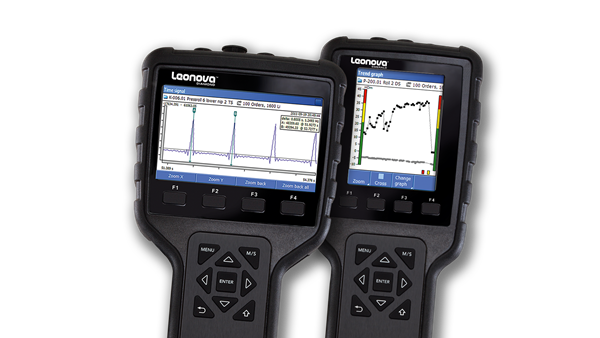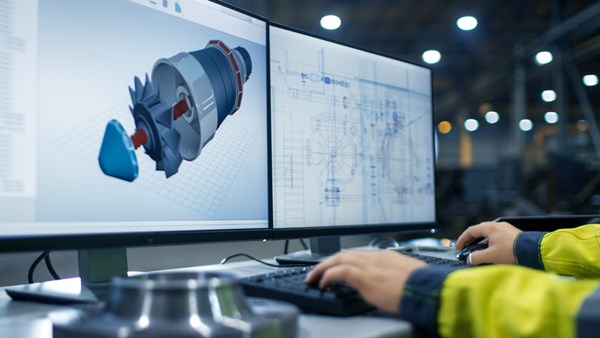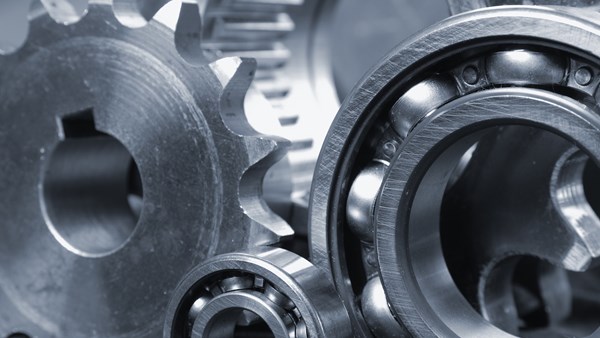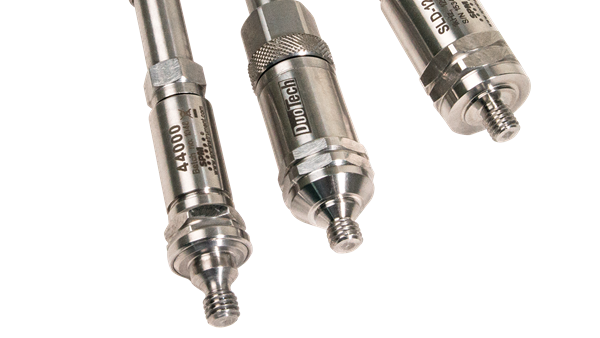Marine and offshore
In the 1960s, Danish ship owner A.P. Møller´s bitter experience was that the cargo pumps of his tankers were breaking down far too often, without forewarning. An inventor and an enterprising financier decided to do something about it. The SPM method was invented, and since then, SPM has been present in the maritime industry.
Also in the early seventies, the entire fleet of British Petroleum tankers, at that time some 80 vessels, were equipped with shock pulse meters for detecting damaged rolling element bearings before they failed. Today, our condition monitoring instrumentation is installed on board over a thousand vessels.
The maintenance on board vessels has traditionally been based on equipment running time. High demands on the environment, reliability, and ship safety have made condition monitoring widely accepted by classification societies, and it is already an option for most vessels. Knowing the condition of your machinery is crucial to avoiding sudden failures and maximizing equipment lifetime. Timely failure prediction and detection are vital for reducing manpower and spare part inventory to increase profit.
 “We were looking for a supplier who could solve the specialized problems of our clients regarding slow turning machinery. We also wanted a software platform that was ‘analysis friendly. But the most principal factor in our decision to buy the Leonova Diamond was the HD technology."
“We were looking for a supplier who could solve the specialized problems of our clients regarding slow turning machinery. We also wanted a software platform that was ‘analysis friendly. But the most principal factor in our decision to buy the Leonova Diamond was the HD technology."
Bárður Heinason, Machine technician, MEST, Faroe Islands
Top drive solution ensures reliability
Since top drive drilling is mission-critical and of the highest priority, SPM offers an Ex-approved condition monitoring solution for top drives to keep them running and minimize downtime.
In addition to handling fluctuating operating conditions such as RPM, load, and torque, the solution monitors:
- Bearing condition
- Gear dynamic behavior
- Gear teeth wear
Drawworks solution – complete and reliable
SPM offers an Ex-rated solution for monitoring the condition of drawworks to optimize drilling efficiency and minimize downtime.
Using HD Technologies, the solution is effective for gear and bearing monitoring. The condition monitoring system has protective features to withstand extreme conditions and can send vibration data to real-time machine-learning dashboards.
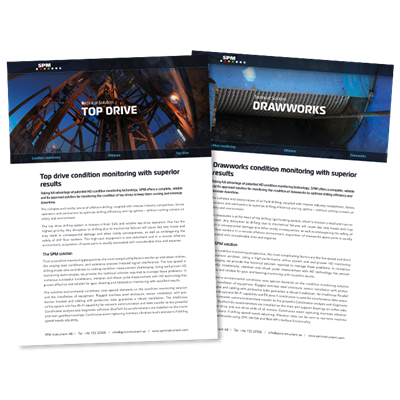


Solutions for the marine and offshore industries
Since our beginnings, we have continuously developed our product range to include portable instruments, online systems, and accessories specifically suited for shock pulse monitoring of critical rotating machines on board, like pumps, fans, turbochargers, azipods, and electrical motors. Vibration monitoring equipment is used on applications where other problems such as alignment, impeller problems, gear problems, and balancing problems occur. On slowly rotating machinery, the SPM HD® measuring technique can be used with benefit. SPM HD uses RPM-based sampling frequency and algorithmic correlation techniques to ensure the highest possible signal quality and razor-sharp spectrums for analysis.
Portable instruments
Intellinova online systems
HD Technologies
Transducers and transmitters
Certified for the marine and offshore industry
CBM in the maritime industry
The trend leans towards larger vessels operated by less crew. Operating large ships with a relatively small crew puts focus on how to use person-hours more effectively. We can learn from Condition-Based Maintenance (CBM) strategies implemented by the land-based industry exposed to international competition and adopt this way of working in the maritime industry. A big part of the maintenance work onboard vessels is, in fact, unnecessary and a product of tradition and previous demands by the class.
The combination of unskilled labour and inspections by classification societies of machines stripped for visual inspections have contributed to the extreme workload in many machine rooms. The redundant machines are installed for safety but are mainly used to compensate for the problems this maintenance approach gives.
CBM are routine measurements and inspections carried out by a selected crew trained to evaluate the results and determine possible corrective maintenance. The redundant equipment is included in the inspection to ensure that they work when needed for safety reasons. The CM software can be connected to the maintenance management system to issue work orders and get the action reported back into the system automatically. The machines are prepared with adapters and transducers to ensure quality readings. Critical equipment like turbochargers can be equipped with online systems for extra protection.
The condition information is used to get an early warning for replacing parts before failure. The readings can also be used for class inspection as an alternative to opening up machines for inspections.
CBM increases reliability and requires fewer person-hours by eliminating unnecessary maintenance caused by time-based inspections and the extra work that catastrophic failures give. The work can be planned and give the crew stable working hours. In addition, there is a reduction in spare part consumption, allowing a smaller stock and making the number crunchers happy.

Application example: Turbocharger
Our solution
Shock pulse transducers installed in the bearing housings, both on the turbine and the compressor side, are connected by coaxial cables to a multichannel measuring and display module. A vibration transducer monitors the overall movement. The readings can also be captured with a portable instrument like Leonova Diamond or Leonova Emerald. You get an instant, user-friendly condition evaluation on a green-yellow-red scale. The system gives immediate results such as maximized up-time, increased profitability, and reduced cost.
The concept of air compression and expansion has been used in a variety of applications: gas turbines, steam turbines, wind energy, turbocharging of diesel engines, and is commonly used in the maritime industry.
A turbocharger comprises a turbine and a compressor connected by a common shaft, supported on a bearing system.
The turbocharger converts waste energy into compressed air that it pushes into the engine. This allows the engine to produce more power and torque and improves the overall efficiency of the combustion process.
The turbocharger has two bearings, one on the compressor side and one on the turbine side. The bearings are either of roller bearing type or sleeve bearing type.
A breakdown of a turbocharger is very costly. Direct costs are primary and secondary material damages. Indirect costs are off-hire of the ship, penalties due to late arrival to port because of decreased speed, and bad will in front of passengers. Therefore, condition monitoring of turbochargers is very important when it comes to monitoring the condition of the turbocharger and planning their maintenance to eliminate any unplanned stops.
Typical faults and trends
While in good condition, turbocharger bearings produce very stable shock pulse readings. Due to the high rpm, the fatigue of these bearings results in a fairly rapid damage development. A few weeks´ warning time can be expected, but it is advisable to replace the bearing at the first opportunity after an increase in the shock level. Vibration above all increases on the turbine side when the compressor is fouled and needs cleaning. Combustion residues on nozzle vanes and turbine blades cause a considerable drop in compressor efficiency.
Bearing damage
The bearing can be damaged due to, for example, normal wear, poor lubrication oil, or incorrect mounting. If the turbocharger runs until the bearing breaks down due to any of the above reasons, this will cause the turbocharger to stop, and the bearing will have to be replaced before startup. Bearing damage might also cause secondary damage to the turbine and the compressor.
Rotor imbalance
Rotor imbalance means that the turbocharger starts to vibrate. This is because the blades have dirt deposit causing these vibrations. If the turbocharger is run toward a rotor breakdown, this will cause the turbocharger to stop. The rotor will have to be replaced, and most probably, secondary damages will have to be fixed.
The solution
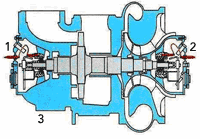
1) Turbine bearing 2) Blower bearing 3) Turbine vibration
A breakdown is very costly, mainly due to material costs. The time from a worsened condition to a breakdown is much shorter compared to many other applications due to the very high speed at which turbochargers are run. An online solution is, therefore, often preferred when monitoring the condition of turbochargers.
Suggested methods
Roller bearing types
SPM monitoring of the bearings with the SPM® method. Vibration monitoring on the housing for measuring the impeller condition.
Sleeve bearing types
Vibration monitoring
For trending and alert handling, SPM Instrument supplies units that give 4-20 mA output for connecting to local PLC. A solution with the Condmaster® Ruby software can also be implemented.

